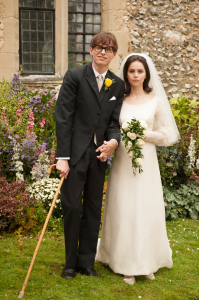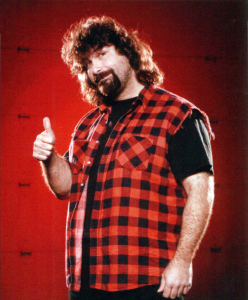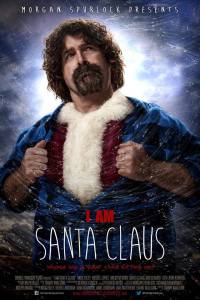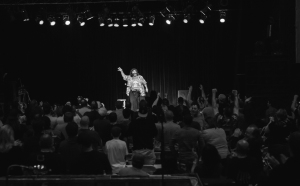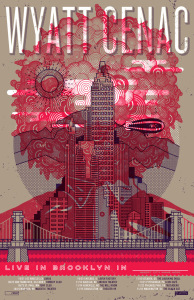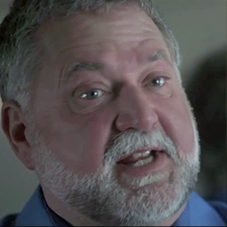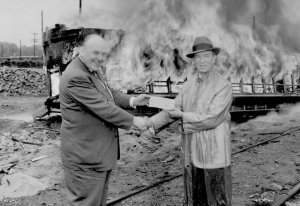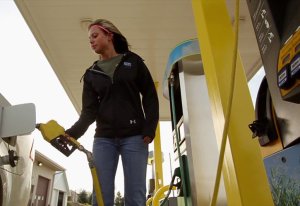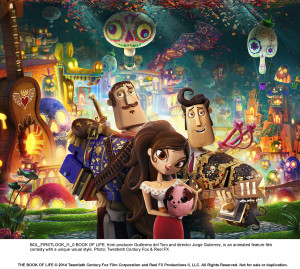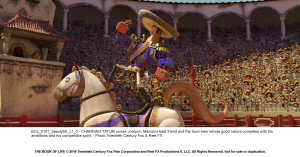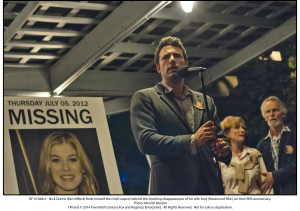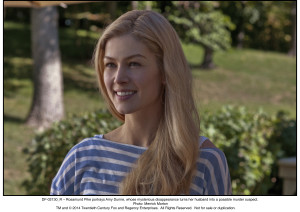Having directed Disney Channel shows such as That’s So Raven, Kickin’ It and A.N.T. Farm, as well as live action film adaptations of toys and cartoons such as Casper Meets Wendy, Bratz and Robosapien: Rebooted, Sean McNamara is an authority on preteen comedy. Having helped launch the careers of Shia LaBeouf, Jessica Alba, Hilary Duff and others, McNamara certainly knows how to discover and develop the talents of future stars. After his foray into more dramatic filmmaking with 2011’s Soul Surfer, McNamara presents another true story about children and teenagers facing very adult-oriented obstacles with Field of Lost Shoes. Having won the Best Dramatic Feature award at this year’s GI Film Festival, the film follows a group of Virginia Military Institute cadets as they are thrust into the Civil War despite their youth (and their conflicting moral convictions). Though the film stars established actors such as Tom Skerritt, Lauren Holly, Keith David and David Arquette, it’s the performances by younger actors like Luke Benward, Max Lloyd-Jones, Zach Roerig and Sean Marquette that really capture the tragically triumphant spirit of the film. With Field of Lost Shoes now playing in select theaters, Wrestling with Pop Culture talks to McNamara about working in the preteen film market, working with former World Heavyweight Champion wrestlers and what he has scheduled for release next year.
I saw Soul Surfer a few years ago and noticed that this film and that one are based on true stories and focus on adolescents who are facing enormous challenges. Is that a theme you particularly seek out?
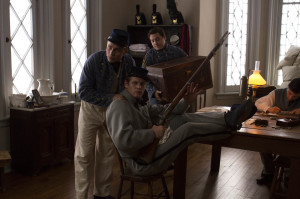
Max Lloyd-Jones as Sam Atwill, Zach Roerig as Jack Stanard and Sean Marquette as Benjamin “Duck” Colonna. Photo courtesy of Bosch Media.
I look for inspirational movies. From an age point of view, I had done Disney and Nickelodeon stuff, so I kind of know talent in that range. So having all the boys play these characters was an advantage because of my experience with that. I love every kind of movie that’s out there. A buddy of mine was a director of photography on Annabelle, which just came out last weekend. Horror movies, action movies, I like them all. But I see a lack of inspirational films like what I grew up with like Rocky where people do extraordinary things. I think we emulate what we see in movies. I’m not a boxer, but after seeing Rocky I definitely was running the next day getting ready for something and getting healthy. There is a place for movies that inspire kids. I’ve got three little boys of my own, 5, 6 and 11, and I just can’t imagine the thought of them going off to war. But it’s a reality for a lot of families. I come from a military background; my dad was a captain in the Navy, my brother was a captain in the Navy. I just think you’ve got to give people who want to go out and make a difference films to watch on a regular basis that are inspirational. For me it was Rudy, Rocky, Raiders of the Lost Ark, all the movies that start with R. But I do look for that. I’m constantly reading scripts and trying to find something that inspires people, even if it makes them sad. As you saw [in Field of Lost Shoes], they die at the end. But they were out trying to do something that they believed in. History proved different of who the victors were. But in any given conflict or war, there are young boys, even 18-22 I still consider super young, giving up their lives for an idea back in their country or homeland. My mission is to put out inspirational movies and try to make them entertaining so people will actually watch them and not feel like they’re eating spinach.
With this film you have a cast of well-known established actors alongside lesser known younger actors. Were there particular challenges working with each group? Did one group learn from the other? What was that dynamic like for you?
It’s always like that. The younger ones pick up stuff from the older ones. There was a show on the Disney Channel called Even Stevens that was Shia LaBeouf’s first TV show. The actor that I almost cast in that instead of Shia was Josh Zuckerman, who played Moses Ezekiel, the Jewish cadet that became an artist. So these kids have been around for 15 or 16 years already, full-on acting. You just don’t know their names yet. But they’re the future of entertainment. They’re really talented, they’ve been around it, they’ve had roles on Disney or ABC Family shows. Most of the actors I worked with – even Nolan Gould, he’s on Modern Family – they’re really talented. So I find the old guys learning from the new guys, the new guys learning from the old guys. On a nuts-and-bolts thing like doing a Civil War movie, the things they don’t know how to do like ride a horse or talk with a Southern accent, those are things you have to layer on and everybody is helping each other with that. So I could see the older actors working with the younger actors on their accents and those sort of things. But everybody loved working with each other and it was an adventure. It’s hard. Even with Soul Surfer, AnnaSophia Robb had never been on a surf board before and I had to make her good enough to look like she could hold a board and paddle. By the end of rehearsals she could strand up, but not like a pro surfer. With this movie I tried to make the boys hold a rifle right, to be able to march, things you wouldn’t think of but, when it’s done wrong, looks kind of silly.
Having worked with David Arquette on this film, you have now worked with two former World Championship Wrestling World Heavyweight Champions, the other being Hulk Hogan. Given what you were just saying about finding inspirational stories, are you a fan of professional wrestling and the inspirational scenarios that often play out in the ring?
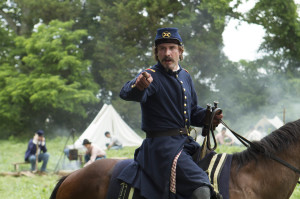
Former WCW World Heavyweight Champion David Arquette as Capt. Henry A. DuPont. Photo courtesy of Bosch Media.
Absolutely. There was a movie that came out almost 15 years ago called Ready to Rumble that I was trying to direct, but Tollin/Robbins Productions did it. I actually did a pilot for a wrestling show. I love wrestling. It’s drama, it’s great performances, it’s people who really get into their bodies and build themselves up and get in a really healthy place. I would still love to do a great wrestling movie.
What was the wrestling show you wanted to do?
The pilot I did for Nickelodeon was called On the Ropes, which was half sitcom, half wrestling. It was really cool, it was very fun, but it didn’t get picked up.
You previously worked with Hulk Hogan on 1998’s 3 Ninjas: High Noon at Mega Mountain. What was it like working with him?
I loved it. He was a gentleman. He tried really hard to do his thing. Obviously he was in great shape. I remember this: he had 25 chicken breasts. Not 26, not 24, every day he ordered 25 chicken breasts for lunch. I could never understand what a weird number that was. But that was his thing. He introduced me to sushi in Denver, Colorado. But he was great. I went to see him wrestle in Vegas after we shot the movie. It was great and he brought a lot to [the movie]. Look at how many wrestlers are becoming great actors like The Rock. He’s starred in so many movies, but Baywatch is the latest one he’s going for. It’s going to be great because it’s going to be tongue in cheek.
Back to Field of Lost Shoes, it had a limited release on Sept. 26. Will it be expanding into more theaters or showing at film festivals?
It won Best Dramatic Feature at the GI Film Festival. It opened in 26 theaters last weekend. It was only supposed to be a limited release, but then you see how it’s played and if it can expand. So it is a slow release and they’re hitting the areas where they think it will do well.
You have some new films coming out next year. What can you tell me about those films and what you’re working on now?
Spare Parts comes out in January with Jamie Lee Curtis, Marisa Tomei and George Lopez. Again, it’s an inspirational true story based on the Wired magazine article “La Vida Robot” where four undocumented Hispanics built an underwater robot and ended up beating M.I.T. in a contest. Then they did it again. So it’s kind of a cool little inspirational movie with underwater robotics. Then I have another Soul Surfer-type, sort of Christian-based movie called Hoovey that comes out in February. On April 10 we have a big movie coming out called The Moon and the Sun with Pierce Brosnan, William Hurt and Kaya Scodelario, who just starred in The Maze Runner.
What do you mean when you say Hoovey is a Christian-based movie?
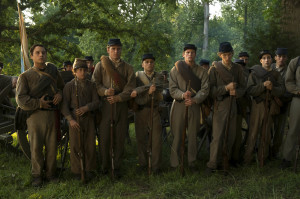
Sean Marquette as Benjamin ‘Duck’ Colonna, Nolan Gould as Robert, Luke Benward as John Wise, Zach Roerig as Jack Stanard, Max Lloyd-Jones as Sam Atwill, Parker Croft as Garland Jefferson and Josh Zuckerman as Moses Ezekiel. Photo courtesy of Bosch Media.
With Soul Surfer, they labeled it Christian. But I set out to do a mainstream movie about a surfer who just happened to be Christian. There are more religious things in the new Footloose, and the old Footloose, than there are in Soul Surfer. Because Hoovey is similar to that – it’s somebody who is a Chrisitian who is playing basketball and gets a tumor in his head, they cut it out and he goes back and becomes a star basketball player – I just know it’s going to be labeled that way.
There’s been a trend of “faith-based” movies as of late. Why do you think that is?
I think it’s becoming a business. There’s an audience out there that definitely won’t go see good, solid films if you put in a couple of curse words or too much nudity. I think what happened was somebody said, “Wait a minute. There’s this group of Christians that still want to go see good movies. If you just cut a couple of those things and tell a good story, they’ll go see it.” It doesn’t have to be a Bible-thumping story, it just has to be good. The ones that have just a little bit of Christianity in them are just exploding because that market wants it. They want to do something with their kids and teenagers and they don’t want them seeing R-rated movies. I think that’s why you’re seeing more because they’re starting to make a lot of money. And they’re getting better. Before, it was wannabe filmmakers who would write a story but didn’t have any real professionals around. Now they’re starting to put really talented people in these movies and getting really talented writers.
www.seanmcnamara.com
www.fieldoflostshoesfilm.com
